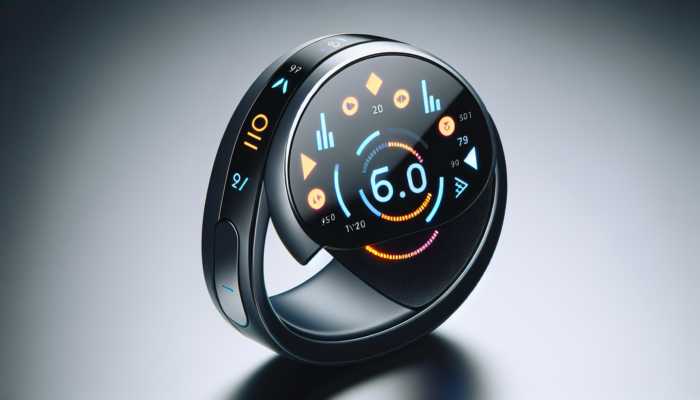Navigating the UK AI Regulatory Landscape for Healthcare Professionals
Understanding the complexities of compliance with healthcare AI regulations is essential for organisations aiming to effectively implement AI technologies within the UK healthcare sector. As the integration of AI becomes increasingly common, it is critical for stakeholders to grasp the regulatory framework that governs this technology. This framework is specifically designed to address the unique challenges that AI presents in healthcare environments. It includes existing legislation, the responsibilities of regulatory bodies, compliance necessities, and ethical considerations that must be adhered to in order to ensure the safe and efficient deployment of AI solutions that protect patient rights and enhance healthcare delivery.
Essential Legislative Framework Governing AI in Healthcare
The cornerstone of the UK’s regulatory structure for AI in healthcare is the Data Protection Act 2018. This significant piece of legislation incorporates the principles of the General Data Protection Regulation (GDPR) into UK law, establishing clear protocols for the handling of personal data. For AI systems operating within healthcare, compliance entails ensuring that any patient data used in the training and functioning of these systems is processed in a lawful, transparent manner and strictly for specified purposes. This adherence is not merely a legal obligation but a fundamental aspect of ethical healthcare practice that promotes patient trust and safety.
Given that AI technologies heavily depend on extensive datasets, many of which contain sensitive patient information, organisations are required to implement stringent measures to comply with data protection principles. These principles include data minimisation and purpose limitation, which are critical in safeguarding patient privacy. Non-compliance may lead to severe repercussions, including hefty fines and damage to the organisation’s reputation. Therefore, it is imperative that healthcare providers incorporate compliance strategies into their AI initiatives from the very beginning to mitigate these risks effectively.
In addition to the Data Protection Act, the UK regulatory framework features specific guidelines that govern the use of medical devices, particularly those that leverage AI technologies. The Medicines and Healthcare products Regulatory Agency (MHRA) holds a pivotal role in ensuring the safety and efficacy of these devices prior to their adoption in clinical settings. Their oversight is crucial for maintaining high standards of patient care and safety in the rapidly evolving landscape of healthcare technology.
Key Regulatory Authorities Overseeing AI in Healthcare
Several key regulatory authorities in the UK are tasked with overseeing the governance and implementation of AI systems within the healthcare sector. The Care Quality Commission (CQC) is responsible for regulating and inspecting health and social care services, ensuring they meet essential quality and safety standards. In the realm of AI, the CQC evaluates the impact of technology on patient care and safety, providing vital guidance on best practices for the integration of AI within healthcare services to optimise patient outcomes.
Meanwhile, the MHRA specifically focuses on the regulation of medical devices and pharmaceuticals, including those that utilise AI technologies. The agency’s role is to ensure that any AI system employed in a clinical context is both safe for patients and effective in achieving the intended health outcomes. This involves comprehensive testing and validation processes that must be undertaken before any AI system can receive approval for use within the National Health Service (NHS) or by private healthcare providers.
Both the CQC and the MHRA regularly issue guidelines and frameworks aimed at aiding organisations in understanding their legal obligations. Engaging with these regulatory bodies at the initial phases of AI deployment can significantly assist organisations in navigating compliance challenges while enhancing the safety and quality of AI technologies in healthcare. This proactive engagement is essential for fostering a culture of compliance and accountability in the use of AI.
Critical Compliance Obligations for Healthcare AI
Adhering to UK healthcare regulations regarding AI entails several crucial compliance obligations. Firstly, organisations must possess a thorough understanding of how their AI systems collect, process, and store patient data. This necessitates conducting Data Protection Impact Assessments (DPIAs) to identify and evaluate potential risks to patient privacy and data security. Such assessments are vital for proactively addressing any compliance gaps and ensuring robust data protection.
Furthermore, it is essential that AI systems undergo regular monitoring and auditing to guarantee ongoing compliance with established regulations. This involves implementing rigorous governance practices that encompass effective data management, comprehensive risk assessment, and structured incident reporting frameworks. Continuous education and training for staff involved in the deployment of AI technologies and patient care are equally important; such training ensures that personnel remain informed about the relevant regulations and ethical considerations associated with AI usage.
Organisations must also be prepared to demonstrate compliance to regulatory authorities, which often requires maintaining detailed documentation that outlines the processes and policies in place to ensure adherence to applicable legislation. By proactively addressing compliance requirements, healthcare providers can mitigate potential risks and foster greater trust in AI technologies among patients and other stakeholders within the healthcare ecosystem.
Addressing Ethical Challenges in AI Integration
The integration of AI into healthcare raises substantial ethical challenges that organisations must confront to ensure patient safety and uphold data privacy. Ethical considerations encompass the necessity for transparency in AI decision-making processes, the obligation to inform patients about how their data is being utilised, and the risks associated with algorithmic bias, which may result in inequitable treatment outcomes for different patient groups. Addressing these ethical issues is paramount for maintaining public trust in AI technologies.
Organisations must adopt ethical guidelines that prioritise patient welfare and autonomy, including the establishment of clear policies regarding patient consent. It is essential that patients understand the implications of their data being used within AI systems, allowing them to make informed choices regarding their participation. Healthcare providers should actively cultivate an environment in which patients feel comfortable discussing concerns related to AI technologies and their potential impact on their care.
Moreover, as AI technologies continue to advance, it is crucial to maintain an ongoing dialogue about the ethical ramifications of AI deployment in healthcare. Engaging with a myriad of stakeholders—including patients, healthcare professionals, and regulatory authorities—will assist organisations in navigating the intricate ethical landscape while promoting responsible AI practices that prioritise patient safety, autonomy, and trust.
Ensuring Data Protection and Patient Privacy in AI Healthcare Solutions
The convergence of data protection and AI in healthcare represents a multifaceted challenge that mandates careful consideration to ensure regulatory compliance and the safeguarding of patient rights. Understanding how to effectively navigate the legal landscape surrounding data privacy is imperative for any healthcare organisation employing AI technologies. This section delves into key aspects such as GDPR compliance, patient consent, data anonymisation techniques, and crucial data security measures designed to protect sensitive patient information.
Understanding GDPR Compliance in AI Systems
Compliance with the General Data Protection Regulation (GDPR) is non-negotiable for any AI system that engages with patient data. The GDPR sets forth rules governing the processing of personal data, including stipulations for obtaining explicit consent, ensuring data portability, and granting individuals access to their own information. For organisations deploying AI within the healthcare sector, this necessitates the development of clear protocols for data management that align with GDPR principles to maintain compliance and protect patient rights.
Organisations must establish lawful bases for data processing, which may involve obtaining explicit patient consent or demonstrating a legitimate interest in utilising their data for specific healthcare objectives. This can be particularly challenging when AI systems depend on extensive datasets that aggregate information from various sources. As such, meticulous attention to compliance details is imperative to avoid legal pitfalls.
In addition, healthcare providers must implement processes that facilitate data subject rights, enabling patients to request access to their data, rectify inaccuracies, and withdraw consent when desired. The consequences of non-compliance can be severe, resulting in substantial fines and reputational damage, underscoring the necessity for healthcare organisations to prioritise GDPR compliance in their AI strategies.
Importance of Obtaining Informed Patient Consent
Acquiring informed patient consent is a fundamental aspect of ethical AI deployment within healthcare. Patients must be thoroughly informed about how their data will be utilised, including any implications that AI technologies may have on their treatment and overall care. This obliges organisations to create clear, comprehensible consent forms that outline the purpose of data collection, potential risks involved, and the measures taken to protect that data.
Moreover, organisations should implement effective processes for managing consent, ensuring that patients have the ability to easily revoke their consent at any time. Transparency is paramount; patients should feel confident that their rights are respected, which can significantly enhance trust in AI technologies and their applications in healthcare.
In addition to obtaining consent, healthcare providers should actively engage patients in discussions regarding how AI can enhance their care experience. By fostering an open dialogue about the benefits and limitations of AI technologies, organisations can promote a better understanding among patients and empower them to make informed decisions regarding their data and treatment options.
Implementing Data Anonymisation Techniques
Anonymising data is a pivotal technique for safeguarding patient privacy while enabling AI systems to extract valuable insights for analysis and improvement. Data anonymisation entails the removal of personally identifiable information (PII) from datasets, effectively preventing the identification of individual patients and ensuring compliance with relevant data protection regulations. This process is not only a best practice but also an essential strategy for organisations aiming to adhere to GDPR requirements.
Various anonymisation techniques are available, including data masking, aggregation, and pseudonymisation. Each method offers distinct advantages and challenges, and organisations must select the most appropriate approach based on the nature of the data and the intended application of AI systems. By implementing effective anonymisation strategies, healthcare providers can derive significant insights from data without compromising patient privacy.
Organisations should also continuously review and refine their anonymisation practices to ensure ongoing compliance with evolving regulations and advancements in technology. By prioritising data anonymisation, healthcare providers can strike an effective balance between leveraging data for AI development and safeguarding the rights of patients.
Essential Data Security Measures for AI Systems
Data security is of utmost importance in the context of AI in healthcare, given the sensitive nature of patient information. Implementing robust data security measures is crucial for protecting against breaches and cyber threats that could compromise patient confidentiality. This involves both technical and organisational safeguards, such as encryption, access controls, and regular security audits to ensure that patient data is adequately protected.
Organisations must establish comprehensive cybersecurity policies that delineate procedures for data access, storage, and sharing. Training staff on security best practices is vital, as human error can often be a weak link in data security protocols. Regular updates to systems and software are necessary to address vulnerabilities and enhance security measures.
Additionally, healthcare organisations should develop incident response plans that outline strategies for effectively addressing potential data breaches. This includes procedures for notifying affected individuals and regulatory bodies, as well as methods for mitigating the impact of a breach. By prioritising data security, healthcare providers can build trust among patients and stakeholders while ensuring compliance with regulations governing the use of AI in healthcare.
Exploring Ethical Considerations in AI Deployment
As AI technologies become more embedded in healthcare, addressing the ethical implications of their deployment is essential for ensuring patient safety and cultivating trust. This section examines the ethical guidelines that govern AI use in healthcare, alongside critical issues such as bias, fairness, transparency, and accountability that must be rigorously considered.
Upholding Ethical Standards in AI Usage
The deployment of AI in healthcare must adhere to stringent ethical standards to guarantee that patient welfare remains the foremost priority. Ethical AI usage encompasses various principles, including respect for patient autonomy, beneficence, non-maleficence, and justice. Healthcare organisations must strive to develop AI systems that enhance positive health outcomes while minimising potential risks and adverse effects on patients.
Incorporating ethical considerations into the design and implementation of AI requires a collaborative approach that engages stakeholders from diverse backgrounds, including clinicians, ethicists, and patient advocates. This dialogue is crucial for creating AI technologies that align with the values and needs of the healthcare community.
Furthermore, organisations should establish ethics review boards tasked with assessing the ethical implications of AI projects, ensuring that all systems adhere to established guidelines and best practices. By prioritising ethical AI usage, healthcare providers can foster trust among patients and ensure that AI technologies contribute positively to healthcare outcomes.
Mitigating Bias and Promoting Fairness in AI Systems
AI systems are only as effective as the data on which they are trained. Unfortunately, if the underlying data contains biases, these can be perpetuated and even amplified by AI algorithms, leading to inequitable treatment outcomes. It is essential for organisations to actively work to mitigate bias in AI systems to promote fairness and equity within healthcare.
This involves utilising diverse datasets during the training phase to ensure that AI systems are exposed to a broad spectrum of patient demographics. Regular audits of AI systems for bias and performance disparities can help organisations identify and rectify issues before they adversely affect patient care.
Additionally, organisations should involve diverse teams in the development of AI technologies, as a wider range of perspectives can help identify potential biases and develop strategies to address them effectively. By prioritising fairness in AI, healthcare providers can contribute to a more equitable healthcare system that serves all patients effectively.
Ensuring Transparency and Accountability in AI Deployment
Transparency and accountability are fundamental principles for the ethical deployment of AI in healthcare. Patients have the right to comprehend how AI technologies influence their care and decision-making processes. Organisations must strive to develop systems that are not only effective but also explainable, enabling patients and healthcare professionals to understand how AI-generated recommendations are formulated.
Establishing accountability frameworks is equally important. Organisations should have clear protocols for addressing errors or adverse events related to AI systems. This entails maintaining accurate records of AI decision-making processes and ensuring that there is a clear line of responsibility for outcomes resulting from AI deployments.
By fostering a culture of transparency and accountability, healthcare organisations can enhance public trust in AI technologies. This trust is essential for ensuring that patients feel comfortable engaging with AI-driven services and that healthcare providers can continue to innovate responsibly and ethically.
Prioritising Clinical Safety in AI Systems
When deploying AI systems in clinical settings, prioritising patient safety is paramount. This section discusses the necessary safety standards, risk management strategies, and protocols for incident reporting that healthcare organisations must implement to ensure the secure use of AI technologies in patient care.
Adhering to Safety Standards in AI Deployment
Adherence to safety standards is essential for any AI system utilised in clinical settings. These standards ensure that AI technologies are both safe and effective, minimising risks to patients. In the UK, the MHRA provides comprehensive guidelines for the development and deployment of medical devices, including those that incorporate AI.
Healthcare organisations must ensure that their AI systems undergo rigorous testing and validation processes, often involving clinical trials to evaluate safety and efficacy. Compliance with relevant standards, such as ISO 13485 for medical devices, is critical in demonstrating that the organisation follows best practices in quality management and patient safety.
In addition to regulatory compliance, organisations should establish internal safety protocols for monitoring AI systems in real-world clinical environments. Continuous safety assessments can help identify potential issues early, enabling organisations to take corrective action before they affect patient care and safety.
Implementing Effective Risk Management Strategies
Implementing effective risk management strategies is crucial for the successful deployment of AI systems in healthcare. This process involves identifying potential risks associated with AI technologies and developing comprehensive plans to mitigate them effectively.
Organisations should conduct thorough risk assessments that consider various factors, including the reliability of AI algorithms, potential biases, and the implications of AI-generated decisions on patient outcomes. Regularly reviewing and updating risk management strategies is essential, as the rapidly evolving nature of AI technologies can introduce new challenges and risks.
Furthermore, fostering a culture of safety within the organisation encourages staff to report any concerns related to AI systems without fear of repercussions. This openness cultivates a proactive approach to risk management, allowing organisations to address issues before they escalate and potentially compromise patient safety.
Establishing Incident Reporting Protocols
Establishing protocols for reporting incidents related to AI systems is essential for maintaining clinical safety. These protocols should outline clear procedures for healthcare professionals to follow when they encounter adverse events or unexpected outcomes stemming from AI technologies.
Organisations must prioritise creating a supportive environment that encourages staff to report incidents without fear of blame or retribution. This culture of transparency facilitates learning from mistakes and allows organisations to implement measures to prevent similar issues from arising in the future.
Additionally, organisations should be prepared to communicate transparently with patients in the event of an incident involving AI systems. Providing clear information about what transpired, the steps taken to address the situation, and measures to prevent recurrence can help maintain patient trust and confidence in the organisation’s commitment to safety.
Validation and Verification of AI Systems
Validating and verifying AI systems in healthcare is critical for ensuring their safety, efficacy, and compliance with regulatory standards. This section delves into the processes involved in validation, the techniques used for verification, and the necessary steps to obtain regulatory approval for AI systems.
Comprehensive Validation Processes
Validation is a systematic process that ensures AI systems perform as intended within clinical settings. This involves testing AI algorithms against real-world data to confirm that they deliver accurate and reliable results. Validation processes must comply with the regulatory guidelines established by the MHRA and other relevant authorities to ensure the highest standards of patient safety.
Organisations should adopt a comprehensive validation framework that includes both pre-market and post-market assessments. Pre-market validation often requires controlled trials, while post-market validation necessitates ongoing monitoring of AI performance in real-world applications to ensure continued efficacy and safety.
By thoroughly validating AI systems, healthcare providers can demonstrate their safety and effectiveness, instilling confidence among stakeholders and patients alike. This process not only supports regulatory compliance but also aids in identifying areas for improvement within AI technologies.
Utilising Verification Techniques for Performance Assessment
Verification techniques are employed to assess the performance of AI systems, ensuring they meet predefined specifications and criteria. These techniques may include software testing, simulation, and comparison with established benchmarks to ensure that AI systems function as intended.
Organisations must develop a detailed verification plan that outlines the specific metrics and standards used to measure AI performance. Regularly conducting verification tests is crucial, particularly as AI algorithms are updated or retrained with new data to maintain compliance and performance standards.
Utilising robust verification techniques enhances the reliability of AI systems and supports compliance with regulatory requirements. This comprehensive approach to verification can also help organisations identify potential issues early, allowing for timely adjustments and improvements in AI technologies.
Obtaining Regulatory Approval for AI Systems
Securing regulatory approval for AI systems in healthcare involves navigating a complex process governed by the MHRA and other relevant bodies. This process typically requires comprehensive documentation that demonstrates compliance with safety, efficacy, and ethical standards.
Organisations should ensure that they clearly understand the regulatory pathway for their specific AI technology, as different systems may be subject to varying requirements. Engaging with regulatory bodies early in the development process can provide valuable insights and assist organisations in streamlining their approval efforts.
Furthermore, maintaining open lines of communication with regulators throughout the approval process can facilitate a smoother journey to compliance. Once approved, organisations must remain vigilant in monitoring AI performance and compliance, as ongoing regulatory obligations may arise post-deployment.
Empowering Healthcare Professionals through Training and Education
The successful implementation of AI technologies in healthcare is heavily reliant on the education and training of healthcare professionals. This section explores the significance of cultivating AI literacy, implementing continuous learning initiatives, and offering ethical training on AI usage to ensure responsible and effective integration.
Fostering AI Literacy Among Healthcare Professionals
Cultivating AI literacy among healthcare professionals is vital for promoting effective and responsible AI deployment. AI literacy encompasses an understanding of how AI technologies function, their potential benefits, and the ethical implications associated with their use in healthcare settings.
Organisations should implement comprehensive training programmes aimed at equipping healthcare professionals with the knowledge and skills needed to leverage AI effectively in their practice. This may include in-person workshops, online courses, and hands-on training sessions that facilitate a deeper understanding of AI applications in healthcare and their ethical considerations.
By fostering AI literacy, healthcare organisations empower professionals to make informed decisions regarding AI technologies, thereby enhancing patient care and safety. A well-informed workforce is better equipped to navigate the complexities of AI, ensuring that these technologies are employed responsibly and ethically.
Commitment to Continuous Learning and Professional Development
The rapid evolution of AI technologies necessitates a steadfast commitment to continuous learning for healthcare professionals. Ongoing education and training initiatives are essential to ensure that staff remain abreast of the latest advancements in AI and their implications for patient care and safety.
Organisations should establish regular training sessions, workshops, and seminars that focus on emerging AI trends, best practices, and regulatory changes. Encouraging participation in industry conferences and webinars can also expose healthcare professionals to new ideas and innovative applications of AI in healthcare, fostering a culture of innovation and adaptability.
By prioritising continuous learning, healthcare organisations can enhance the overall effectiveness of AI technologies in healthcare while staying ahead of regulatory and ethical challenges. This commitment to professional development not only benefits healthcare providers but also leads to improved patient outcomes.
Providing Ethical Training on AI Usage
Delivering ethical training regarding AI use is crucial for ensuring that healthcare professionals grasp the moral implications of deploying AI technologies in patient care. Ethical training should cover topics such as patient consent, data privacy, algorithmic bias, and the importance of transparency in AI decision-making.
Organisations should incorporate ethical discussions into their training programmes, encouraging healthcare professionals to engage in critical thinking about the impact of AI on patient care and outcomes. This could involve case studies, group discussions, and role-playing scenarios that aid professionals in navigating ethical dilemmas they may encounter in practice.
By equipping healthcare professionals with the knowledge and tools to approach AI ethically, organisations can foster a more responsible and patient-centric approach to AI deployment. This commitment to ethical training not only enhances patient trust but also supports compliance with regulatory obligations surrounding AI use.
Collaborative Engagement with Regulatory Bodies
Effective collaboration with regulatory bodies is essential for ensuring compliance and promoting best practices in the deployment of AI technologies. This section discusses strategies for engaging with the Care Quality Commission (CQC), the Medicines and Healthcare products Regulatory Agency (MHRA), and the National Institute for Health and Care Excellence (NICE) to enhance regulatory compliance and foster a culture of safety.
Building Relationships with the CQC
Establishing a productive relationship with the Care Quality Commission (CQC) is vital for healthcare organisations deploying AI technologies. The CQC provides invaluable insights and guidance on best practices and compliance standards, aiding organisations in navigating the complexities of AI integration in healthcare.
Organisations should proactively engage with the CQC by attending workshops, seeking advice on regulatory compliance, and participating in consultation processes. By establishing open lines of communication, organisations can gain a clearer understanding of regulatory expectations and address concerns before they become significant issues.
Additionally, organisations should involve the CQC in discussions regarding their AI strategies, soliciting feedback on proposed initiatives while ensuring that patient safety remains a paramount consideration. This collaborative approach can enhance the overall quality of care and create a more favourable regulatory environment for AI technologies.
Collaborating with the MHRA
The Medicines and Healthcare products Regulatory Agency (MHRA) plays a critical role in overseeing the regulatory approval process for AI systems in healthcare. Early engagement with the MHRA during the development phase can significantly aid organisations in navigating the complexities of regulatory compliance.
Organisations should develop a clear understanding of the regulatory requirements specific to their AI technologies and actively seek guidance from the MHRA. This may involve submitting pre-market notifications, participating in consultations, and addressing queries from the agency to facilitate a smoother approval process.
By fostering a collaborative relationship with the MHRA, healthcare organisations can streamline the approval process for their AI systems while ensuring compliance with safety and efficacy standards. This proactive engagement can ultimately enhance patient trust and confidence in AI technologies within healthcare.
Utilising Regulatory Feedback for Improvement
Utilising feedback from regulatory bodies is a vital aspect of improving AI systems in healthcare. Engaging with organisations like the CQC and MHRA allows healthcare providers to gather insights on compliance and identify potential areas for enhancement.
Organisations should actively seek feedback from regulatory bodies concerning their AI deployments, utilising this information to refine processes and enhance safety measures. Regularly reviewing feedback can assist organisations in adapting to evolving regulatory requirements and promoting a culture of continuous improvement within the organisation.
By prioritising regulatory feedback, healthcare providers can ensure that their AI systems are not only compliant but also aligned with best practices for patient safety and quality of care.
Cooperating with NICE for Enhanced Standards
Collaboration with the National Institute for Health and Care Excellence (NICE) is essential for improving healthcare standards in the context of AI deployment. NICE offers evidence-based guidelines and recommendations that can inform the development and application of AI technologies in healthcare.
Organisations should engage with NICE to ensure that their AI systems are in alignment with the latest clinical guidelines and best practices. This may involve submitting evidence to support the use of AI in specific clinical contexts or participating in consultations on the development of new guidelines and standards.
By liaising with NICE, healthcare providers can enhance the quality of care delivered through AI technologies while ensuring compliance with established standards. This collaborative approach fosters a more effective integration of AI in healthcare, ultimately benefiting both patients and practitioners.
Ensuring GDPR Compliance in AI Deployment
Prioritising compliance with the General Data Protection Regulation (GDPR) is a fundamental component of deploying AI systems in healthcare. Organisations must focus on data privacy and protection by developing robust policies and procedures that align with GDPR requirements to safeguard patient information.
This includes obtaining explicit patient consent for data processing, implementing data minimisation strategies, and ensuring individuals have access to their data. Regular audits of data practices can help organisations identify potential compliance issues and address them proactively to mitigate risks.
By prioritising GDPR compliance, healthcare organisations can foster trust with patients and stakeholders, ensuring that AI technologies are utilised responsibly and ethically in the delivery of healthcare services.
Implementing Monitoring and Auditing of AI Systems
Ongoing monitoring and auditing of AI systems are critical for ensuring compliance with regulations and maintaining high standards of patient care. This section discusses the importance of implementing robust monitoring processes, conducting regular audits, and utilising performance metrics to assess the effectiveness of AI technologies in healthcare settings.
Continuous Monitoring of AI Performance
Implementing continuous monitoring of AI systems within healthcare is vital for identifying potential issues and ensuring compliance with regulatory standards. Organisations should develop monitoring protocols that track the performance of AI systems in real-time, allowing for timely interventions when anomalies or discrepancies are detected.
Continuous monitoring may involve assessing algorithm performance against clinical outcomes, tracking user interactions with AI systems, and evaluating patient feedback on AI-driven services. By maintaining vigilant oversight of AI technologies, healthcare providers can swiftly address any concerns and enhance patient safety and service quality.
Moreover, organisations should consider investing in advanced monitoring tools that leverage machine learning and analytics to detect patterns and trends in AI performance. These technologies can yield valuable insights that inform decision-making and improve the overall effectiveness of AI systems in healthcare.
Conducting Regular Audits for Compliance
Conducting regular audits of AI systems is essential for maintaining compliance with regulations and ensuring that organisations adhere to established guidelines and best practices. Audits should evaluate various aspects of AI deployment, including data management processes, algorithm performance, and adherence to ethical standards.
Organisations should develop a comprehensive audit plan that details the specific metrics and criteria to be assessed during audits. Engaging external auditors with expertise in AI technologies can also provide valuable insights, enhancing the credibility of the audit process and ensuring thorough evaluations.
By prioritising regular audits, healthcare providers can ensure that their AI systems remain compliant and effective in delivering quality patient care. These audits also foster a culture of accountability and continuous improvement within the organisation, reinforcing a commitment to excellence in healthcare delivery.
Utilising Performance Metrics for Effectiveness Assessment
Utilising performance metrics is vital for assessing the effectiveness of AI systems in healthcare. Organisations should establish key performance indicators (KPIs) that measure the impact of AI technologies on patient outcomes, clinical efficiency, and overall satisfaction with AI-driven services.
These metrics may encompass various data points, such as accuracy rates, response times, and patient feedback scores. Regularly reviewing and analysing these metrics can help organisations identify areas for improvement and refine their AI technologies accordingly to enhance patient care.
By focusing on performance metrics, healthcare providers can demonstrate the value of AI systems in improving patient care and outcomes. Transparent reporting of these metrics can also help build trust among patients and stakeholders, reinforcing the organisation’s commitment to quality and compliance in AI deployment.
Adapting to Future Trends and Regulatory Changes
As AI technology continues to evolve, remaining vigilant about emerging trends and regulatory changes is crucial for healthcare organisations. This section explores the importance of monitoring new AI technologies, understanding regulatory updates, considering ethical implications, and analysing market dynamics to ensure effective AI deployment in healthcare settings.
Staying Informed on Emerging AI Technologies
The rapid advancement of AI technologies presents both opportunities and challenges for healthcare organisations. Staying informed about emerging technologies, such as machine learning algorithms, natural language processing, and predictive analytics, is essential for harnessing their potential to enhance patient care and outcomes.
Organisations should invest in research and development efforts to explore how these technologies can be effectively integrated into existing healthcare practices. Collaborating with academic institutions and technology providers can facilitate innovation and help ensure that healthcare providers remain at the forefront of AI advancements.
Moreover, engaging with industry forums and networks can help organisations stay updated on the latest trends and best practices in AI. This proactive approach can foster a culture of innovation and adaptability, ensuring that healthcare providers can leverage emerging technologies effectively for improved patient care.
Monitoring Regulatory Updates for Compliance
The regulatory landscape governing AI in healthcare is continually evolving, necessitating that organisations stay abreast of any changes. Monitoring regulatory updates from bodies such as the MHRA, CQC, and NICE is essential for ensuring compliance and adapting to new requirements that may arise in the field.
Organisations should establish mechanisms for tracking regulatory changes, such as subscribing to industry newsletters and participating in relevant webinars and workshops. Engaging with regulatory bodies can also provide valuable insights and guidance on upcoming changes and their implications for healthcare practices.
By prioritising awareness of regulatory updates, healthcare providers can ensure that their AI systems remain compliant and aligned with emerging standards. This proactive approach can enhance patient safety and contribute to a more reputable and trustworthy healthcare environment.
Prioritising Ethical Considerations in AI Deployment
As AI technologies advance, the ethical implications of their use in healthcare must continue to be a foremost priority. Organisations should remain vigilant in addressing ethical concerns, such as algorithmic bias, patient consent, and data privacy, as these issues can significantly impact patient trust and health outcomes.
Establishing ethical guidelines and frameworks that reflect the evolving nature of AI technologies is crucial for responsible deployment. Engaging with diverse stakeholders, including patients, healthcare professionals, and ethicists, can foster a more comprehensive understanding of the ethical challenges associated with AI deployment in healthcare.
By prioritising ethical considerations, healthcare organisations can help shape future policies and practices that guide the responsible use of AI technologies in healthcare. This commitment to ethical AI deployment not only enhances patient care but also reinforces public trust in healthcare technologies and their applications.
Analysing Market Dynamics for Effective AI Integration
Market dynamics play a significant role in the adoption and development of AI technologies within healthcare. Understanding how economic factors, competition, and patient demand influence the AI landscape is essential for organisations seeking to implement innovative solutions that meet the needs of patients and providers alike.
Organisations should monitor trends in healthcare funding, technological advancements, and consumer preferences to identify opportunities for AI integration that align with market needs. Collaborating with technology providers and industry leaders can also facilitate access to new technologies and innovations that enhance patient care.
By analysing market dynamics, healthcare providers can develop strategies that align with emerging trends while enhancing the overall effectiveness of AI technologies. This proactive approach can position organisations as leaders in AI deployment and contribute to improved patient outcomes in the long term.
Frequently Asked Questions about AI in UK Healthcare
What are the primary regulations governing AI in UK healthcare?
The primary regulations include the Data Protection Act 2018 and GDPR, which dictate standards for data handling and patient privacy, along with guidance from regulatory authorities such as the MHRA and CQC.
How can healthcare organisations ensure compliance with GDPR?
Organisations can ensure compliance with GDPR by conducting Data Protection Impact Assessments, obtaining explicit patient consent, and implementing stringent data security measures to protect sensitive information.
What is the role of the CQC in AI deployment within healthcare?
The Care Quality Commission regulates and inspects health and social care services, ensuring that AI technologies implemented in these settings meet essential quality and safety standards for patient care.
How is patient consent managed in AI systems?
Patient consent must be obtained transparently, providing individuals with clear information on how their data will be used, along with the option to withdraw consent at any time without repercussions.
What ethical considerations should be addressed in AI use within healthcare?
Ethical considerations encompass ensuring transparency, preventing bias, protecting patient privacy, and maintaining accountability for decisions made by AI systems in healthcare contexts.
How do organisations validate their AI systems?
Validation involves systematically testing AI systems against real-world data to confirm their performance and efficacy, ensuring compliance with regulatory standards and enhancing patient safety.
What is the significance of continuous monitoring of AI systems?
Continuous monitoring allows organisations to detect potential issues and ensure compliance with regulations, thereby enhancing patient safety and the overall effectiveness of AI technologies in healthcare.
How can healthcare professionals enhance their AI literacy?
Healthcare professionals can enhance their AI literacy through targeted training programmes that cover the principles of AI, its applications in practice, and the ethical implications associated with its use in healthcare delivery.
What are the risks associated with bias in AI algorithms?
Bias in AI algorithms can result in unfair treatment outcomes, particularly if the training data does not adequately represent the diverse patient population and their unique needs.
What does the future hold for AI regulations in healthcare?
The future of AI regulations is likely to evolve alongside technological advancements, focusing on enhancing patient safety, establishing ethical standards, and ensuring compliance with data protection laws to foster trust in AI technologies.













